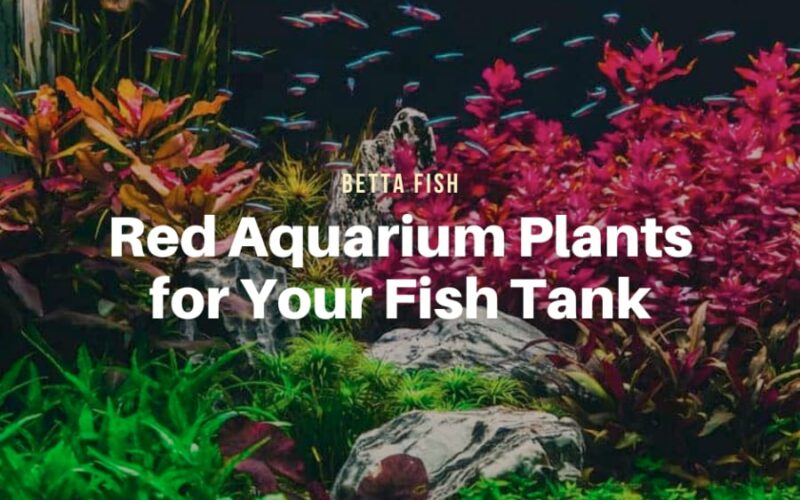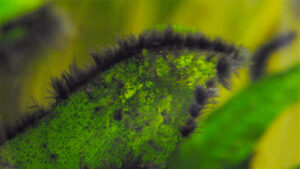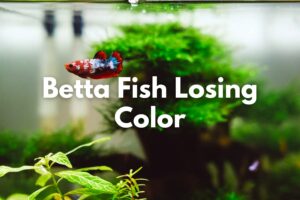Many ideas are available to add a splash of color to the aquatic environment like using red aquarium plants for your fish tank.
Combining aquatic plants with various colors can add beautiful visual effects to the fish tank. They look in contrast to the green color of most aquatic plants.
If you plan to create a more appealing home for your fish, you should equip yourself with red aquarium plants that are popular among aquarists.
Besides, learn how to grow and take care of them to present a more dramatic aquatic environment inside the fish tank.
Popular Red-Colored Aquarium Plants for Your Fish Tank
Selecting the right plant for the aquarium is quite demanding because many options are available. Here is a list containing several popular red plants that will look very good in the aquarium. Besides, you will also know the standard maintenance and necessary specific care for each plant.
Alternanthera Reineckii
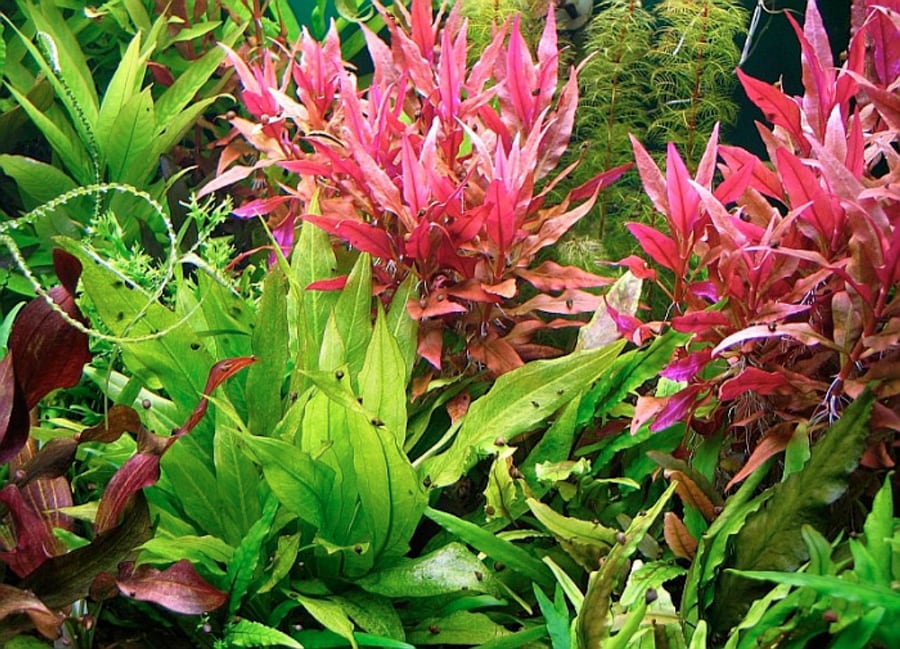
Most red plants for aquariums are hard to grow but it is different for Alternanthera Reineckii. This plant requires easy growing and maintenance. It is available in different varieties. “Mini” and “Rosanervig” are the most famous varieties of all. The mini variety is smaller and brighter than others.
That is why it looks good to place near the surface. Meanwhile, Rosanervig belongs to the higher varieties, making it more suitable for a background. Alternanthera Reineckii is a slow-grower and provides more options for decorating. It is also a bushy plant and can be a fish shelter.
This plant requires regular trimming to manage its growth. You need to trim the branches carefully to ensure it grows optimally. Trimming the healthy tall branches on its top to get a better result. Alternanthera Reineckii needs a bit different maintenance than many red aquarium plants.
This plant does not need carbon dioxide as much as its counterparts. Yet, it needs enough lighting to be alive and appealing. Aside from proper lighting, you should provide a soil-based substrate and conduct regular algae removal to keep it healthy and increase its lifespan.
Bacopa Salzmannii “Colatara”
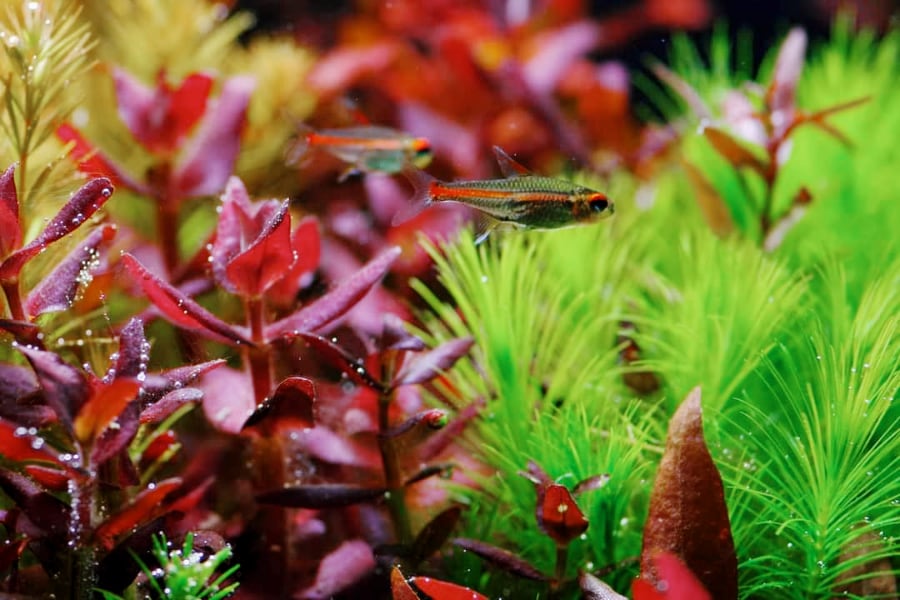
Bacopa Salzmannii belongs to USA native aquatic plants for aquarium. It’s not actually a red plant, but the purple color mimics red in certain lighting condiotion.
Its branches flourish from the bottom of the plant so beginners can grow it inside the aquarium conveniently. The low-spreading branches also create an amazing look among green aquatic plants in the tank.
Bacopa Salzmannii grows slowly so you have enough time to plan and decorate what the fish tank looks like. It is also the most versatile aquatic plant that requires very easy maintenance. Bacopa Salzmannii can grow in any substrate, tank size, in low light, and without carbon dioxide injection.
Although it stands in various environments, it needs similar care to other red aquarium plants if you want it to have bright colors and vigorous growth. Bacopa Salzmannii is the perfect option for aquarists who do not want to provide additional light as it develops well in low to medium lighting.
Giving normal daylight into the house where you put the fish tank is enough for this plant. However, additional lights can help it flourish more vivid purple foliage. It can grow fairly well although you put it in the smallest tank. It makes the aquarium more appealing no matter its size.
Ludwigia Repens
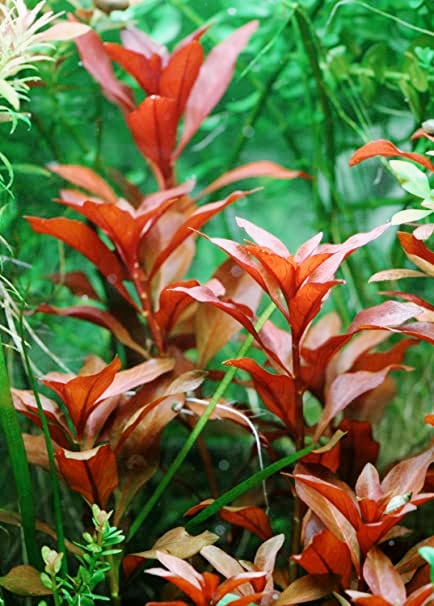
If you never grow any aquarium plants before, Ludwigia Repens is one of recommended red aquarium plants for your fish tank. Many experts suggest that this plant is suitable for beginner aquarists. It survives in various tank sizes, grows easily, and produces beautifully colorful leaves.
Although it goes well regardless of the aquarium size, many aquarists prefer to use a larger aquarium to grow it. It has dark red foliage and stalks that become its primary attraction. That is why it stands out and contrasts among green aquatic plants. It grows slowly, making it convenient for decorating.
Ludwigia Repens shows a bushy look when it reaches fully grown. Yet, it still needs regular trimming as a maintenance procedure for how to grow red aquarium plants. Besides, you need to adjust the nitrate and phosphate and manage the lighting system for better growth.
Using a bigger tank gives more benefits because you can combine many aquatic plants for more wonderful decoration. It is easy to grow because of its strong roots and can stand on any substrate. Even when you use a low-nutrient substrate, you can add artificial nutrients to support its growth.
Rotala Macrandra
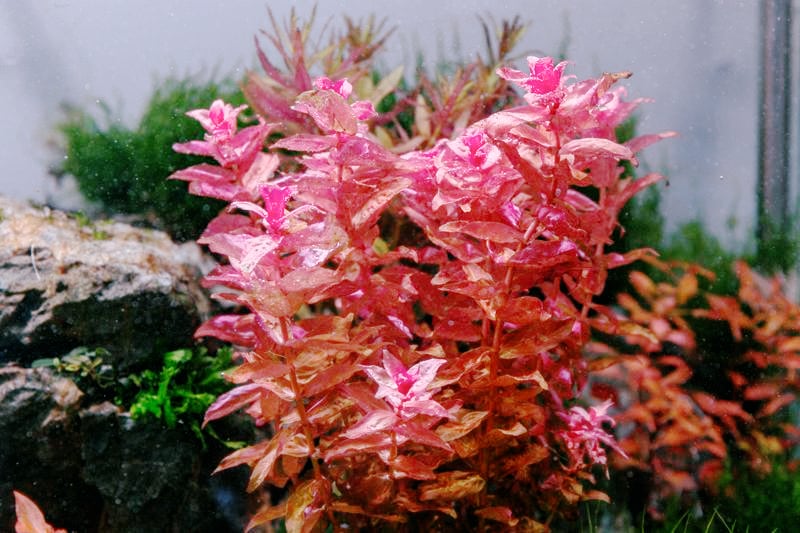
Rotala Macrandra is one of the globally famous red aquarium plants for your fish tank. It has a bright red color that steals the heart of novice aquarists and aquarium enthusiasts. It can grow quickly and present a matchless dazzling look when it reaches a fully-grown stage and flourish vivid red foliage.
This plant has several foliage varieties like red, green, narrow, small, and others. The green Rotala Macrandra can grow easier than the red ones but the red variety is more popular to discover in many aquariums. Combining several varieties using optimal lighting creates a matchless appealing look in the aquarium.
Rotala Macrandra is demanding for novice aquarists since it requires more complex maintenance than other red aquarium plants for your fish tank. It demands more nutrients, adequate iron, intense lighting, and strict pH level checking to keep healthy. Carbon dioxide injection is possibly necessary too.
Carbon dioxide injection keeps the carbon dioxide level stable because it may fluctuate and harm this plant. Besides, maintaining enough lighting and giving trace elements supplements is the effective method on how to keep red aquarium plants red.
Red Barclaya Longifolia
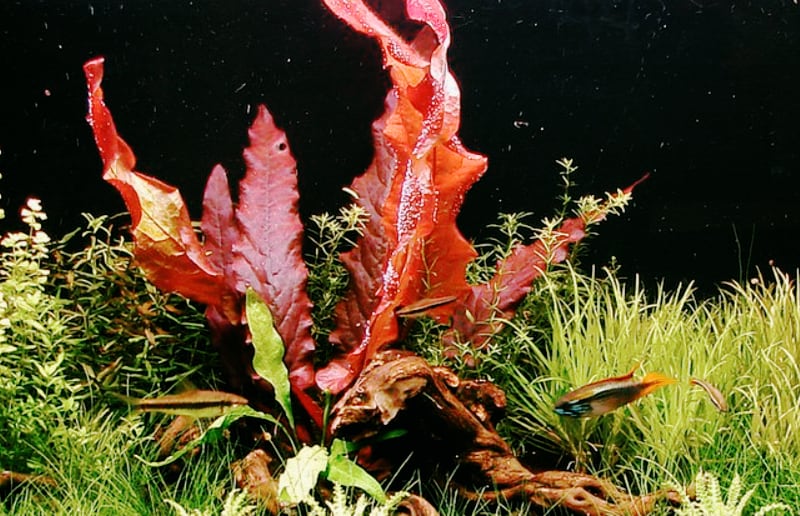
Red Barclaya Longifolia is native to Southeast Asia that has sparkling red color. It belongs to a water lily but can grow fully underwater. This trait makes it more famous as an aquatic plant. It can grow easily at a medium rate and looks good to grow in the middle or as a background of the tank.
It demands nutritional requirements not as much as several red aquarium plants for your fish tank. Medium lighting works best for this plant. You can provide radiant lights and reduce direct sunlight to develop more vivid leaves. Select the substrate carefully due to its weak roots.
You can add pebbles and a large granule river to support its growth. Unlike regular cleaning, routine feeding and water changes are not necessary. You can feed this plant using essential mineral supplements once in ten days. This plant attracts numerous aquarists.
Red Barclaya Longifolia is the same as other red aquarium plants that can be a shelter for small aquarium inhabitants. It becomes an outstanding midground decoration in the aquarium and undoubtedly alleviates its look.
Lagenandra Meeboldii
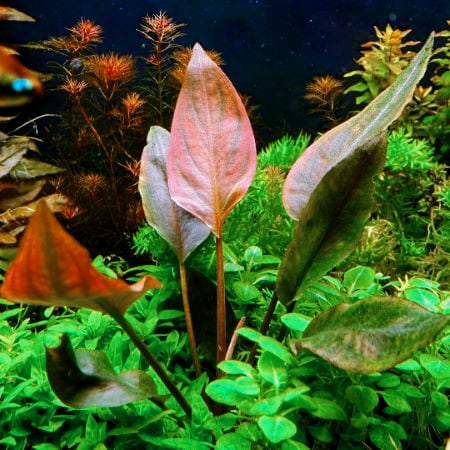
Lagenandra Meeboldii is native to south India. This medium-sized aquatic plant has different varieties, from green to plain red foliage. In one leaf, you can discover different shades. The red and green varieties are the most famous among aquarists. It works best for midground.
It has greenish leaves but changes into different colors based on its growing condition. Due to its color consistency, Lagenandra Meeboldii is one of the aquarium plants that can complement and give contrast to the rest.
It grows slowly and needs less maintenance. It can survive in any aquarium regardless of size. Red Lagenandra Meeboldii has large roots so it is more suitable to use a nutrient-high substrate for its growing media. Medium lighting without carbon dioxide injection is enough for normal growth.
However, you should provide intense lighting and carbon dioxide injection to develop rich color. Its foliage comes with a special pattern and can shadow the nearby plants. Thus, consider this trait before adding red aquarium plants to your fish tank.
Red Ludwigia Sp.
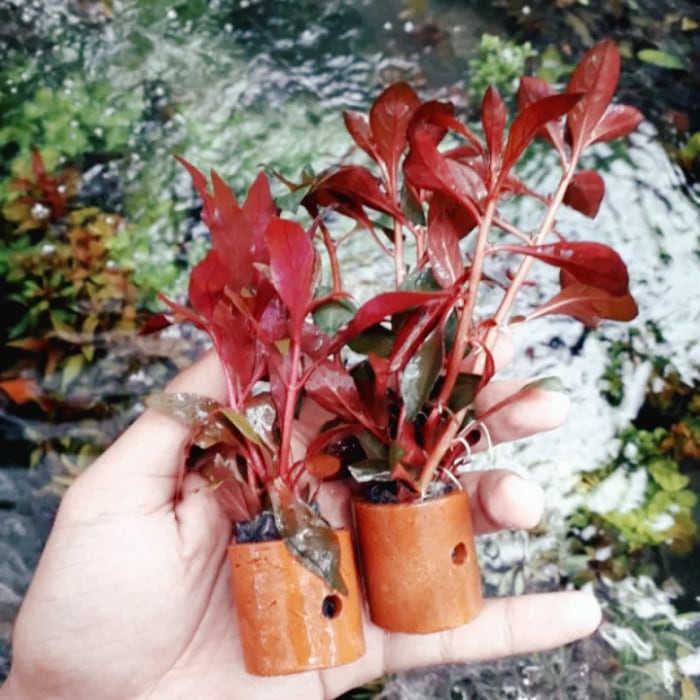
Red Ludwigia Sp. is also popular in the aqua space due to its vivid red color. It requires an easy-growing method and less maintenance. Only it is fragile so you must give it appropriate care. Immediate change to water parameters can be fatal for the plant so you need to maintain the water well.
Like many aquarium plants, Ludwigia Sp. requires enough lighting to enrich its color. It can grow underwater partially or fully. If it grows fully underwater, its foliage turns dark green or brownish-red. It can give a bushy look to increase the aquarium’s visual.
Red Ludwigia Sp. is the most suitable for the center or as the background of the fish tank. It should receive regular trimming for a better look. It also needs intense lighting and carbon dioxide injection to get the optimum red color. It can be an exceptional decoration in the aquarium with proper care.
Persicaria Sao Paulo
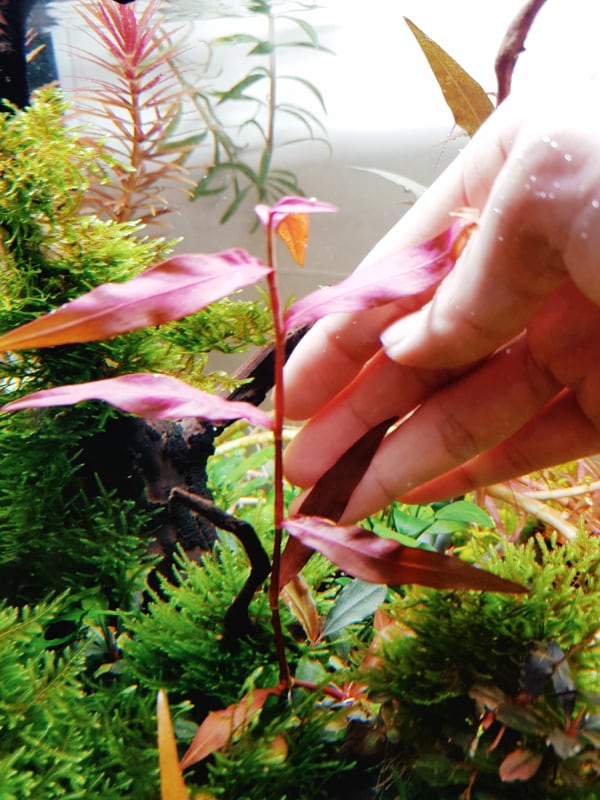
Persicaria Sao Paulo originates from Brazil and becomes a nice midground option for your aquarium. The red color of its foliage is unique because you can see the magenta shade. Persicaria help can add contrast to green aquarium plants.
It grows at a medium rate but you need to manage the temperature and pH level of the water well. It is less demanding because you can use soft and hard water. This plant grows easily in any lighting type, from low to medium. It can develop magenta foliage under the proper care and enough lighting.
Many aquarists are interested in this plant because it has the most intense color. It offers easy propagation as it only requires you to trim its top and plant it on a suitable substrate.
Tiger Lotus
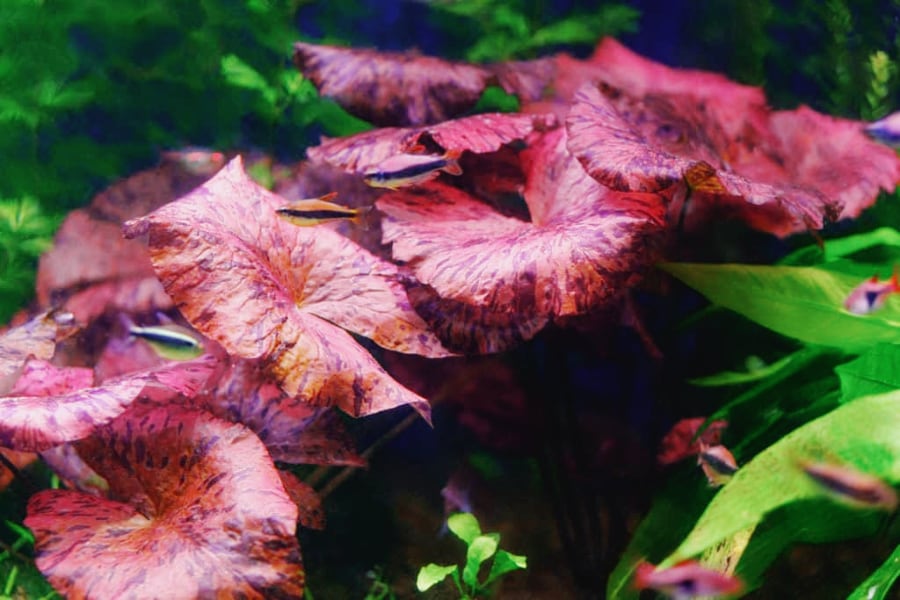
Tiger Lotus often grows in shallow and stagnant water. It is also a water lily and native to Southeast Asia and West Africa. It has arrow-shaped foliage in red color, making it an exceptional addition to any aquarium.
It can grow fast and does not require specific care. One thing that you need to remember is to provide enough iron to keep its leaves red. Lack of iron usually leads this plant to flourish greenish foliage rather than red. Tiger Lotus needs lots of nutrients so its growth should be under control.
You can perform regular trimming to prevent it from malnourished other plants in the tank. Besides, it produces a toxic chemical that can interfere with other plants’ growth. Thus, you should put the distance between a red Tiger Lotus with other plants.
Tiger Lotus can alleviate the beauty of the aquatic environment like other aquarium plants if it receives appropriate care and aquascaping. Then, it can grow harmoniously with other plant species inside the tank.
Rotala Yao Yai
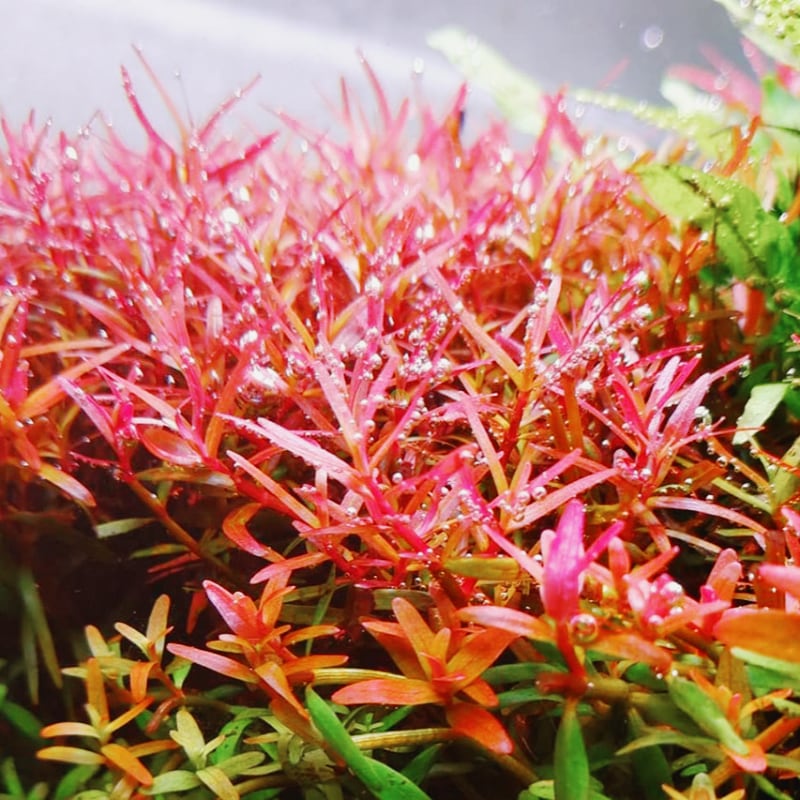
Rotala Yao Yai is a unique aquatic weed because its branches have orange pinkish shade. Its varieties have no significant differences, only brighter in color. It grows at a medium rate so aquascaping is necessary. It is less common than other red aquatic plants that becomes one of the best options.
Many aquarists consider it as one of the red aquarium plants that will looks good as the background of your fish tank. The optimal look of this plant depends on the aquarium type used. Its vibrant red color with a pinkish shade gives the tank a more appealing appearance.
To achieve a bushy look, it requires proper regular trimming. It is different from most aquarium plants because Rotala Yao Yai does not need a specific trimming procedure. You can replant this plant in other spots inside the aquarium if it is necessary. You can uproot this plant too.
It is one of the must-have options for your aquarium, especially if you are fond of vivid and vibrant aquatic plants. Rotala Yao Yai will creep among the green plants and gives an undeniably beautiful contrast color.
Myriophyllum Tuberculatum
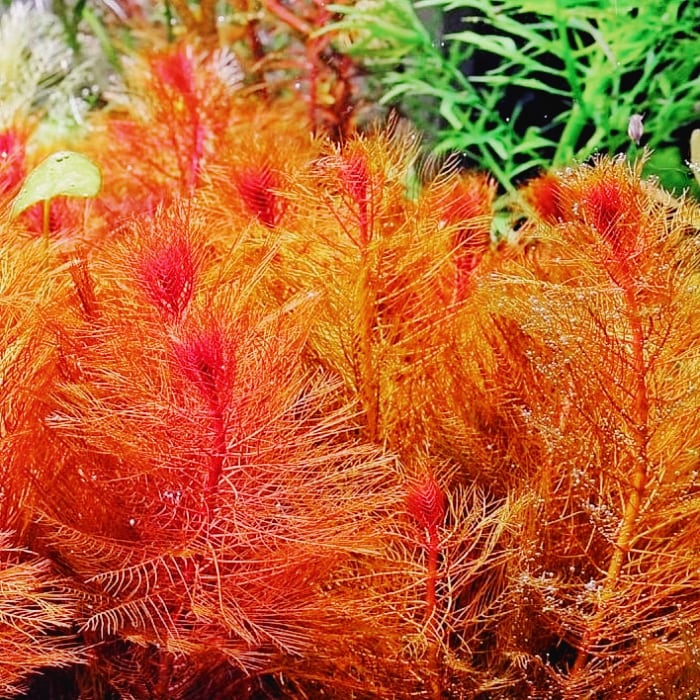
Compared to other red aquarium plants for your fish tank, Myriophyllum Tuberculatum is more difficult to grow. It has feather-liked leaves with vibrant red color. This plant is native to Southeast Asia but you also can discover it in Australia. It requires strict maintenance to grow optimally.
You must provide intense lighting with 0.8 watts minimally for a liter of water in the aquarium. Besides, you must maintain a nitrate range between 5 and 12 mg per liter and phosphate levels remain at 1 to 2 mg per liter. If you fail to maintain these parameters, it leads to severe growth delay.
Moreover, maintaining iron and macronutrients is necessary to avoid discoloration on its foliage. Myriophyllum Tuberculatum can grow to the surface and create a bushy appearance. You can put this plant as a background or in the middle of the tank while ensuring the surrounding plants receive enough lighting.
Myriophyllum Tuberculatum requires a high amount of carbon dioxide so carbon dioxide injection can help this plant to achieve its optimal growth. If you maintain the growing parameters successfully, Myriophyllum Tuberculatum gives beautiful red addition to your fish tank.
Final Thoughts
Although selecting red-coloured aquarium plants for your fish tank is bit tricky, they are worthy of the fish’s living environment. Besides having similar functions to many green plants, they can increase the aquarium visual due to their vivid color.
You can discover many options for red aquarium plants, from less maintenance to extra efforts like additional lighting and supplement injection. Thus, you can choose the plant that suits your preference and maintenance capability.
